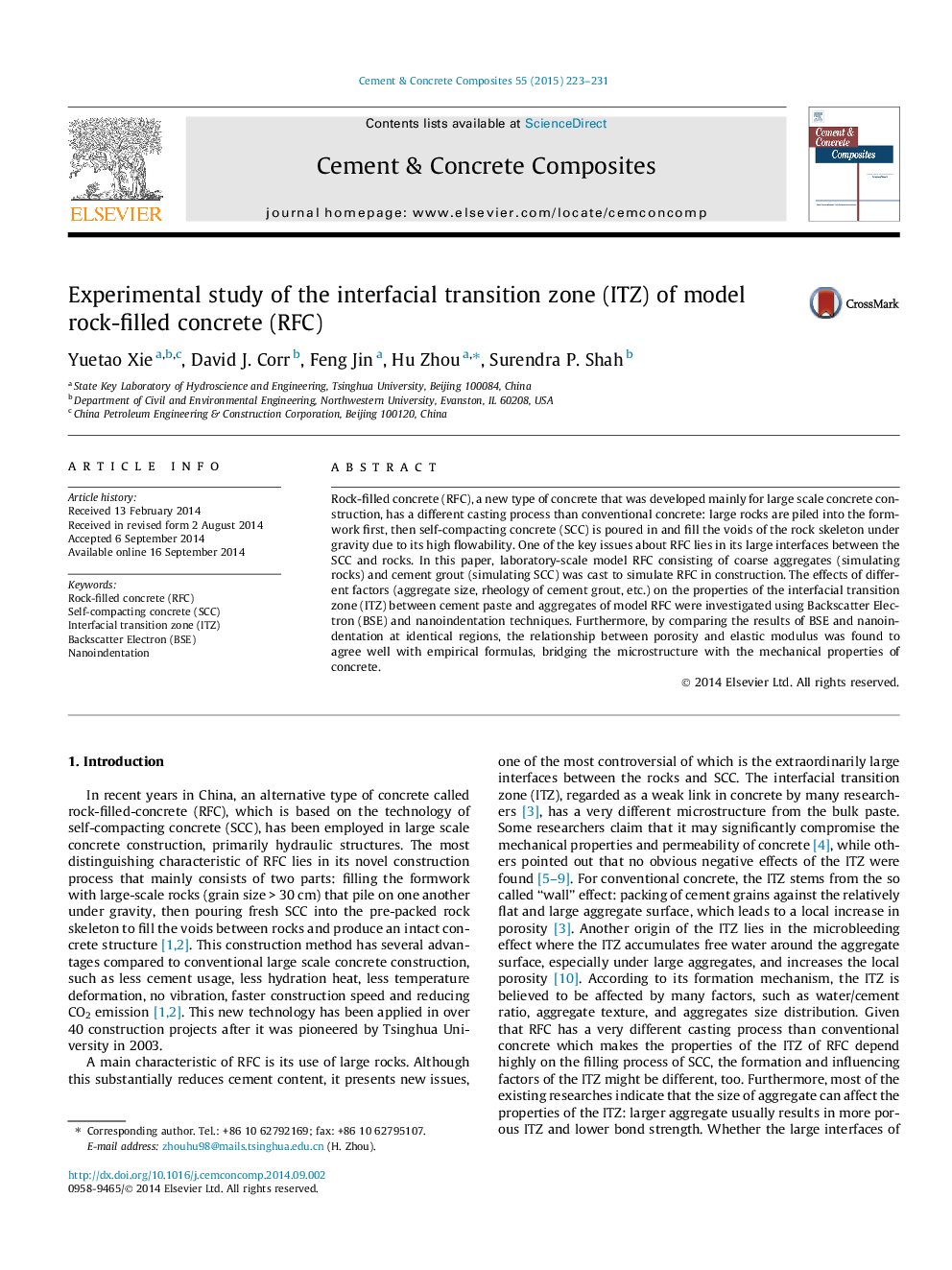| Article ID | Journal | Published Year | Pages | File Type |
|---|---|---|---|---|
| 7884280 | Cement and Concrete Composites | 2015 | 9 Pages |
Abstract
Rock-filled concrete (RFC), a new type of concrete that was developed mainly for large scale concrete construction, has a different casting process than conventional concrete: large rocks are piled into the formwork first, then self-compacting concrete (SCC) is poured in and fill the voids of the rock skeleton under gravity due to its high flowability. One of the key issues about RFC lies in its large interfaces between the SCC and rocks. In this paper, laboratory-scale model RFC consisting of coarse aggregates (simulating rocks) and cement grout (simulating SCC) was cast to simulate RFC in construction. The effects of different factors (aggregate size, rheology of cement grout, etc.) on the properties of the interfacial transition zone (ITZ) between cement paste and aggregates of model RFC were investigated using Backscatter Electron (BSE) and nanoindentation techniques. Furthermore, by comparing the results of BSE and nanoindentation at identical regions, the relationship between porosity and elastic modulus was found to agree well with empirical formulas, bridging the microstructure with the mechanical properties of concrete.
Related Topics
Physical Sciences and Engineering
Engineering
Industrial and Manufacturing Engineering
Authors
Yuetao Xie, David J. Corr, Feng Jin, Hu Zhou, Surendra P. Shah,
